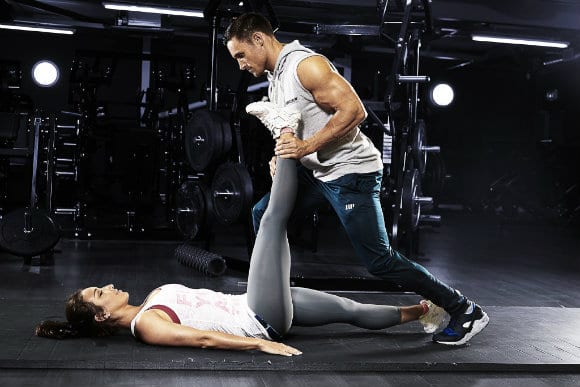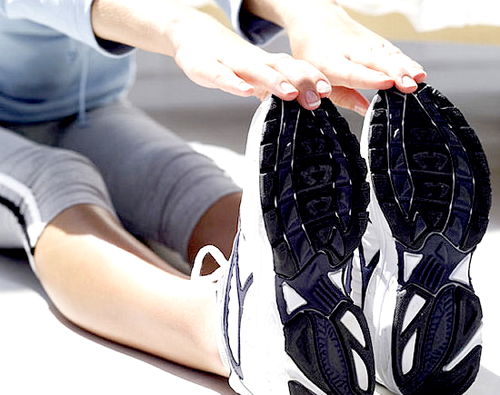What Is Stretching For?
Since childhood, in the hours of physical education, it was almost an obligatory practice. Over the years, however, the evaluation and use of this activity have changed radically, let's see how in this article.
In the past, stretching was used solely as a complement to physical activity. It was not uncommon, in fact, that at the end of any type of training the classic session of "stretching" was completed, aimed at avoiding muscle injuries. To date, however, based on recent studies, this practice can be considered a real "complete" training, and it is also used and appreciated as a tool in rehabilitation after surgery and trauma to the musculoskeletal system.
In fact, involving tendons, joints and especially muscles, stretching improves joint lubrication and counteracts osteoarthritis and wear of cartilages. In addition, stretching exercises also have beneficial effects on the elasticity of muscles and tendons, counteracting the shortening of tissues and improving posture.

The general rule is that it is practiced at the end of the exercise sessions, never, never between the various sessions and is absolutely contraindicated as a type of heating. The comparison that makes the most of the idea is that of accelerating to the maximum a still cold engine. We repeat in chorus, "never, never".
Stretching is not a singular practice, there are various types and each one has its own peculiarities. Among the various methods, the two most used are:
- static stretching
- stretching dinamico
Static Stretching
Generally the most used, it involves taking a position that can be maintained without feeling pain. The position in question must be reached slowly so as not to stimulate the antagonist muscle to contract, and maintained for an average time of about 20 seconds.
The advice is to perform this type of stretching when the muscles are already warm and following the logic of compensation, in other words training a part of muscles in the first exercise and their antagonist in the next.
Stretching Dinamico

Used on average, it involves movements whose excursion increases progressively. It tends to be associated as a "warming" phase. The most classic example is trying to touch the tip of your feet while sitting without flexing your legs. The various bounces that lead us to get closer and closer to the goal progressively increase our elasticity, hence the definition of “dynamic”.
I personally adore stretch using some yoga postures, especially with regard to the back muscles, the elasticity of the pelvis and the muscles of the lower limbs. The lotus position (sitting on the ground, legs bent towards the pelvis with the heels placed at the opposite hips, hands placed on the knees with the palms facing the sky), for example, it is excellent after exercises on the back to maintain posture, on the contrary, the position of the dog (prone with hands at waist height, arms extended and perpendicular to the ground) is excellent for stretching the abdominal wall after having trained it properly.
Breathing During Stretching
While doing stretching it is necessary to keep the diaphragm and abdomen relaxed by breathing properly normal. It is important to inhale the air from the nose and exhale from the mouth.
In the stretch phase it is advisable to exhale slowly along the entire range of the movement, then you continue to breathe quietly, remaining in the position of maximum extension for about ten seconds. Finally, you slowly return to the resting phase. Each repetition should last no more than 25 ”between the stretch and rest phase.
Why Stretching is Essential
1. If you do strength training exercises and don't want to tense up.
After an intense workout, the stressed muscles tense and contract. A regular and intense effort causes the stiffening and shortening of the muscle fibers, with a consequent limitation of the motor capacity of the body. Muscle development without stretching exercises can lead to nerve pressure, slowing the transmission rate of nerve impulses and, in special cases, blocking nerve activity. Regular training without stretching exercises can lead to a feeling of constant body tension, a drop in energy, a sense of fatigue and muscle and joint blocks.
2. If you want to reduce the tension caused by stress.
Muscle tension can also manifest itself as a reaction to stress. It causes tiredness and irritation. Stretching allows you to release tension, relax the muscles and, as a consequence, reduce the level of stress. Muscle aches reduce their intensity, as well as back pain and neck pain. The sense of well-being of those who practice this type of exercise increases considerably.
3. If you want to be fit in old age.
Failure to stretch the muscles leads to a more rapid wear of the joints, with consequent phenomena of degeneration and pathologies. If you want to stay in shape for a long time, stretching should be an important part of your day.
Conclusion
Summarizing the stretching:
- Increases the blood supply to the muscles.
- Increases the motor efficiency of the muscles.
- Increases the mobility of the joints.
- Relax the muscles, ensuring a greater sense of psychological well-being.
- Causes faster muscle regeneration after training.
- Reduces the amount of lactic acid inside the muscles.
- Strengthens and makes ligaments and tendons more elastic.
- Reduces the risk of accidents.
Good workout!


























